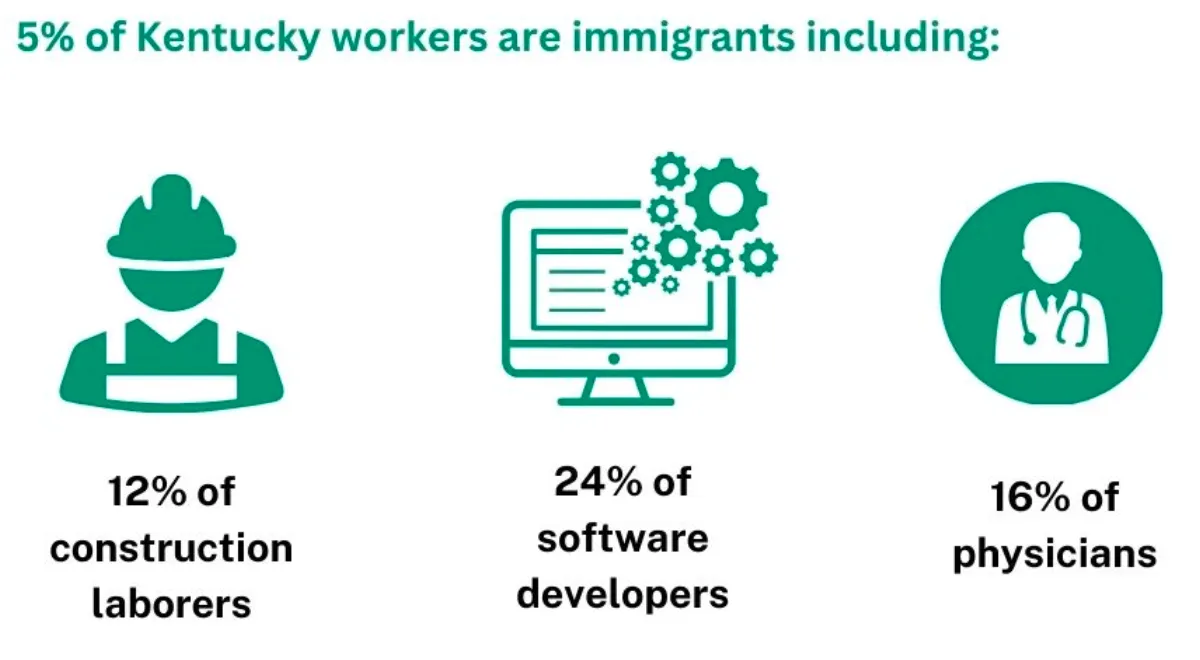Table of Contents
It is well known at this point that there is a widespread housing crisis in the US. Concerns about housing typically fall into two categories: supply and cost, with many arguing that these issues are just two sides of the same crisis coin.
The symptoms of the problem
In case you aren’t familiar with our current housing crisis, here are the symptoms that tell us we are in a crisis.
Housing supply is low ...
In terms of supply, there is a gap of around 7 million homes needed to adequately house the US population. Adding to this gap, nearly 6 million homes are unsafe, containing lead paint, bad wiring, or mold, meaning we need at least 13 million additional homes to adequately and safely house everyone.
Home construction is booming, at levels not seen in over 15 years. Multi-family construction is at a 30-year high. But the number of homes on the market are at record lows – levels not seen since the 1990s. Houses take time to build, and while there may be new homes available in the next few years, it does little to help the situation now.
... while costs are out of control
On an even trickier level is the issue of housing cost, which is at record levels. While the number of apartments has generally gone up, the number of affordable units has gone down, and people at all income levels are now more likely to be rent burdened than in the past.
In Kentucky, just under a third of households rent. Exploring this a little more, 40% of Louisville households rent, but in areas with higher numbers of college students, this number is significantly higher (46% in Lexington, 60% in Bowling Green, nearly 70% in Morehead). The average monthly rent in Kentucky is $783. In Louisville this number is $878 and in Lexington it is $920.
However, these figures are five-year averages. Generally, these types of averages are good and insulate data from years that may be outliers. But they can hide what is happening more recently.
Over the past year, rents and housing costs have skyrocketed to absurd levels. The monthly asking rent in the US recently surpassed $2000, up 15% in a year. In nearby metro areas like Nashville and Cincinnati (which includes parts of Northern Kentucky), rent is up 30%. It’s not that bad in Louisville, but the average rent still jumped to $1097 in the second quarter of 2022.
Demand curves don’t work the way most people imagine when dealing with inelastic goods like housing. You can’t simply move someplace cheaper when none exists. As costs go up for all housing types, people often have little choice but to pay. As the head of one housing investment group asked, “Where are people going to go? They can’t go anywhere.”
As a result of these cost increases, 13.7 million households in the US are now behind on either rent or mortgage payments – up nearly a third since just April. All of this has led to a dramatic rise in homelessness. One GAO report found that every $100 increase in rent is associated with a 9% increase in homelessness.
If a community’s lowest earners can’t afford to live there, it isn’t affordable. Do they not deserve a place to live?
The causes of the problem
So why are housing costs increasing so dramatically? There are a few causes that can be addressed. Some, such as material costs, are pretty straightforward. Others, such as zoning laws and NIMBYism are also well documented. Local zoning codes frequently prohibit the kind of dense, affordable development needed to create housing on a large scale, and NIMBYs may work to prevent affordable housing from going in their neighborhoods. But hardly any new development is going to be affordable.
“Affordable housing” is often contrasted with “market rate” housing. This has been one of the most successful branding euphemisms in recent memory. The opposite of affordable housing is not market rate housing – it’s unaffordable housing. But showing up to planning boards arguing for unaffordable housing is not a great strategy.
In terms of actual construction, market rate or “luxury” apartments are built to the same codes as affordable housing. Aside from some nicer carpet and kitchen features, the only real difference is who can afford to be your neighbor. With market rate housing, you are paying more to ensure that you don’t have to live near poor people.
But the biggest cause in this recent jump is the rise in investors and speculators in the housing market looking to extract even greater amounts of money than traditional landlords. Of the largest owners of apartments in the US, about half are backed by private equity groups. When these large groups raise rents, smaller landlords often see it as a license to do the same.
And this increase is not limited to apartments. Nationwide, 28% of single-family homes are now bought by investors, who seek to extract as much profit out of their tenants as possible. With such a large number of houses being taken off the market for potential buyers, more and more people who would otherwise become owners are forced to rent. People in these situations are more likely to fall behind on rent, and larger landlords are more likely to file for eviction.
More troubling, the homes targeted by these speculators are not random or evenly spread out.
Investors are purchasing homes in neighborhoods with more single mothers and higher levels of minority residents. While many of these communities are still dealing with the lingering effects of redlining, this accelerated practice of “rentlining” is likely to keep the wealth that comes from home ownership out of reach for anyone not fortunate enough to have owned a house by 2020.
Some solutions to the problem
Solutions that work pretty well
There are many ways to address this issue. Some solutions are low hanging fruit. But while they may be relatively easy and generally effective for communities, the results of each of these policies are rather lackluster on their own. Finding success using these methods will almost certainly take an “all-of-the-above” approach.
To begin, zoning laws must be changed and, in many cases, eliminated. Things like lot sizes, setbacks, and most importantly parking minimums should all be revised to allow for denser and cheaper development. Ending single family zoning has also had positive effects, but as shown in Minneapolis, these results may not be as dramatic as hoped.
Other changes such as allowing accessory dwelling units and single room occupancy residences would also help. Both have seen movement lately. When California relaxed ADU regulations, construction of these units increased nearly 1000%. Historically, SRO housing (boarding rooms, dorms, etc.) was a huge part of housing stock in the US and its decline is often pointed to as a reason for modern homelessness. Converting hotels to this sort of housing is a solid option.
Rent control or stabilization policies are another topic which has received renewed attention. While critics warn that tenant protection would limit the supply of new housing, there is no connection between the two ideas. Keeping rent down is an obvious and vital tool for housing affordability. Other policies such as the right to council for people facing evictions, tenants having the first right to purchase a property up for sale, and supporting tenants unions have also shown effectiveness across the country.
Cities should also work to limit the effect of investors. Policies such as an incremental property tax on people who own multiple properties, higher taxes on out-of-state or absentee owners or house flippers, and vacancy or blight fines would all help ensure that people aren’t cornering large sections of the housing market – or at least not profiting from doing so.
One city doing work in this area is Atlanta. While many investors are buying up property to rent to residents, others are renting short term, which prevents someone who needs a home from living in the space. A new ordinance in Atlanta would limit people to owning no more than two short-term rental properties such as AirBNB or VRBO, one of which must be their primary residence, meaning you must be a resident of Atlanta. Hosts are also required to pay a $150 annual fee and an 8% tax rental fee.
The need for Atlanta’s ordinance was great. A third of all homes purchased in Atlanta in the first quarter of 2022 were bought by investors, subjecting many residents to the results already discussed. Atlanta now has one of the largest concentrations of extended stay hotels in the country due to residents being priced out of their homes – to the point where some local school districts have established stops at these hotels. While this ordinance only targets short term rentals, it is a good start.
Again, none of these policies will be enough on their own. But taken together, they could put a real dent in the housing crisis.
Solutions that don’t work as well as hoped
Other policies, while not harmful necessarily, don’t accomplish the goal of getting people in housing they can afford long term.
One frequently touted solution is to move those who need housing into vacant units. There are enough vacant homes to meet the need for 13 million homes, so this idea makes sense. But, the reality is more complicated than that.
Many of these vacant homes are dilapidated, and many more are far away from jobs and existing support networks. Additionally, these vacant homes are not evenly distributed. The states with the highest vacancy rates are Vermont, Maine, and Alaska (Kentucky is right in the middle at #23), and metro areas tend to have lower rates than states as a whole. This can certainly help some on the margins but is not a widespread solution.
Inclusionary zoning (including some affordable units in larger developments) is also underwhelming. IZ provides little affordable housing for the cost and projects often take years to complete. It’s throwing people who need housing scraps and making them wait to get them. Furthermore, developers use IZ to take advantage of tax breaks, which are often enormous. We are heavily subsidizing new development just to get apartments most people still can’t afford.
Rent assistance is another frequently suggested policy, expanded heavily during the first year of COVID. While this does keep a roof over people’s head, it only works until funding runs out, does nothing to keep prices down, and ultimately just funnels public money to landlords, so its long-term effectiveness is limited at best.
Social Housing
All of these solutions however miss a key point. While we have a twin crisis of housing availability and affordability, the issues are not as related as many people think.
Many have argued that adding to the supply of housing will drive down prices because people have more choice. But simply increasing the supply will not on its own result in lower prices. Even if we built millions of new homes tomorrow, they would almost certainly be unaffordable because developers and house flippers expect to profit heavily.
Again, things like housing or food aren’t the same as some imaginary widget in an economics textbook. There’s only so much you can cut back on, and landlords bank on their tenants choosing to pay more for rent rather than become homeless. Additionally, the increasing monopolistic character of certain organization owning larger and larger portions of the market means that we can’t even rely on competition to keep prices in check.
We need more housing, yes, but the real issue is that we have abandoned the creation of housing to the private sector, and the free market has proven to be woefully inadequate to handle the current crisis. Housing is a human right. People have more of a right to housing and being a part of a community than a landlord does to make a profit. This idea is being slowly adopted even if policy hasn’t caught up yet.
The answer to this problem is social housing, which is publicly funded and available to anyone in the community, not just lower-income residents. Rent can be income adjusted or set to a low rate. These housing developments should be mixed use, with doctors’ offices and day cares available for use by residents, and must be integrated into the existing community, not cut off or isolated.
Public housing in the US got a bad reputation due to racism and chronic disinvestment (also due to racism), but the model has worked remarkably well in cities all across the world, most notably Vienna. With social housing, public housing is redefined from housing of last resort to a public good like schools or the fire department, and is similar to other big ideas like Medicare for All.
Initially financed through municipal bonds, over time it would be self-financing, so there is no need for continual government subsidies. Ownership can be through the government, non-profits, or cooperative ownership, though most would have a heavy amount of residential control, and it should be permanently off the private market.
Some areas are already working toward this goal. Boston, for instance, could initially fund this sort of housing development through a planned tax on expensive homes or a tax on landlords. The city is also looking to de-commodify housing using land trusts. Boston is being led in these efforts by Michelle Wu, who is far and away the best mayor in the country.
Whether governments go big and construct social housing on a large scale, or take a bunch of smaller steps like zoning reform and rent control, the public sector has to take the lead in this crisis. Offering incentives to landlords and developers hasn’t worked, and relying on the private sector to solve an issue they have no interest in solving isn’t a solution.
--30--








